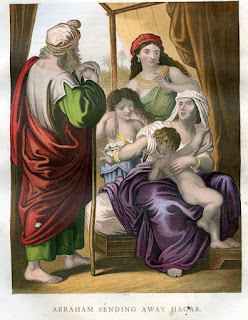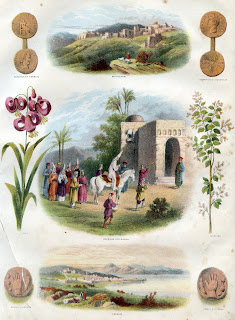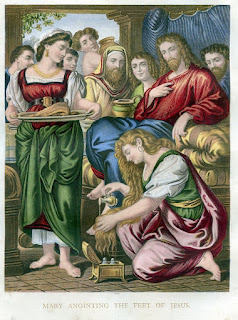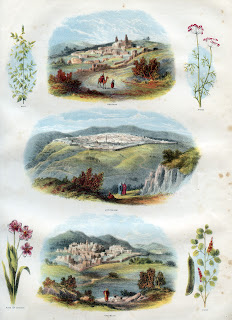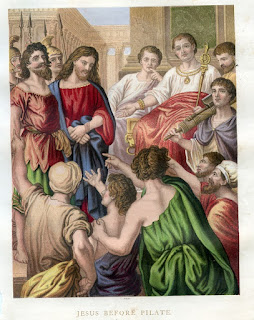Ray Gosling
Sum Total (3* to 5*)
Personal Copy: a Memoir of the Sixties (3* to 5*)
Ray Gosling was a writer and broadcaster who made television and radio programmes about ordinary people. His autobiographies, ‘Sum Total’ written when he was 21, and ‘Personal Copy’ when he was 40, are of varied consistency (some parts of them are 5*), but at their best are fascinating memoirs of the fifties and sixties. They document how, despite going to grammar school and university, which he left fairly quickly, he rejected any idea of a middle-class professional career and organized and campaigned for working-class causes. He conveys a strong sense of how the times they were a-changin’. His evocative eulogy to the now lost St. Ann's community of Nottingham is extraordinary.
My next post is about his film about Goole.
Key to star ratings: 5*** wonderful and hope to read again, 5* wonderful, 4* enjoyed it a lot and would recommend, 3* enjoyable/interesting, 2* didn't enjoy, 1* gave up.
Previous book reviews
Google Analytics
Saturday 30 September 2017
Thursday 28 September 2017
People who can‘t say ‘ull
The BBC Radio Four announcer said this afternoon that in half an hour there would be a programme about the 2017 City of Culture.
“I know where he means” I thought, but then he mystified me by saying it was about the Ezzall area of the city. It took me a moment to realise he meant ‘essle. There is a difference. In trying to mimic the local accent, he had over-emphasised the initial E.
Like the friend I had when I worked in Scotland. No matter how hard she tried, no matter how many times I demonstrated, she could never say ‘ull without it sounding wrong. The initial U was too strong, almost beginning with a glottal stop. The voice-onset came too soon. It’s a soft gentle U after the dropped H, not a hard one.
It seems to my ears that people not from the region cannot say ‘ull or ‘essle properly, or for that matter ‘owden, ‘edon, ‘altemprice or ‘umber. Please, unless you grew up in East Yorkshire or thereabouts, don’t try. Just put the H in.
The programme, incidentally, was Hull 2017: The Spirit of Hessle Road.
“I know where he means” I thought, but then he mystified me by saying it was about the Ezzall area of the city. It took me a moment to realise he meant ‘essle. There is a difference. In trying to mimic the local accent, he had over-emphasised the initial E.
Like the friend I had when I worked in Scotland. No matter how hard she tried, no matter how many times I demonstrated, she could never say ‘ull without it sounding wrong. The initial U was too strong, almost beginning with a glottal stop. The voice-onset came too soon. It’s a soft gentle U after the dropped H, not a hard one.
It seems to my ears that people not from the region cannot say ‘ull or ‘essle properly, or for that matter ‘owden, ‘edon, ‘altemprice or ‘umber. Please, unless you grew up in East Yorkshire or thereabouts, don’t try. Just put the H in.
The programme, incidentally, was Hull 2017: The Spirit of Hessle Road.
Labels:
2000-2020s,
accents and language,
Hull,
humour,
Rawcliffe/Goole/Howden
Wednesday 20 September 2017
Brown’s Self-Interpreting Family Bible
Is it a sin to destroy a bible? I fear I may have committed sacrilege, not just once but three times over: to God, to my ancestors and to lovers of old books everywhere.
A few years ago I inherited a small suitcase containing a copy of Brown’s enormous Self-Interpreting Family Bible, which my father in turn had inherited from his Grandad Dunham. “You’d better take this” he was told, so he rode home with it balanced on his bicycle handlebars.
It was in pitiful condition: torn and loose pages, detached spine and end boards, faded gilt titles and tarnished metal stubs where clasps once fastened. It was stuck up with yellow tape where someone had tried to repair it. It smelt old and fusty. It deposited dusty specs of decaying leather and paper wherever you put it down. It seemed to be infested with mites. A metaphor, perhaps, for Christianity in the twenty-first century of the Common Era.
It was as big as a breeze block: about 13 x 10 x 3¼ inches (33½ x 25½ x 8½ centimetres) with over 1,100 pages. Once it would have been very beautiful book. Grandad Dunham, a devout Methodist, would have kept it constantly on display on a special table in the best room of the house, open at the page he was currently studying.
However, it was not really his. It was his wife’s. The inscription inside reads:
Miss E MannIt must have cost a lot of money, a sacrifice, but she herself was unable to read it. When she married Grandad Dunham she could only sign the Register with ‘X’ her mark. It seems unlikely that her parents could read it either. Perhaps they gazed in awe at the beautiful pictures inside, learnt their stories and meanings, and got someone else to write the inscription.
A present from
Her Dearly Beloved Mother
On Her twenty first
Birthday March 30th
1887
Amber Hill
Sutterton Fen
The full title was:
Browns Self-Interpreting Family Bible, containing the Old and New Testaments, to which are annexed marginal references and illustrations, an exact summary of the several books, a paraphrase of the most obscure or important parts, explanatory notes, evangelical reflections, &., &., by the late Rev. John Brown, Minister of the Gospel at Haddington, with many additional references and numerous illustrations.Nothing like a snappy title is there, but how was it self-interpreting? It seems to be down to the copious explanations and cross-references throughout, so thorough they effectively paraphrase the whole thing. For example, on the following page from Genesis, the notes are longer than the actual text:
God, with most exquisite art and skill, formed man’s body of the dust ... and so made him [human] the Reverend Brown interprets Verse 7 for us, and then cross-references this to similar assertions such as: we are the clay, and thou our potter. He continues in similar vein throughout the whole of the Old and New Testaments, exactly what you might expect from a man who despite minimal formal education taught himself Greek, Latin and Hebrew. His fellow members of the Secession Church in Scotland felt so inadequate they thought his learning must have come straight from the devil. He was like a living computer with the NVivo software.
Yet there is more. As well as the Old and New Testaments, there is a section on the life of the author (1772-1787), followed by a multi-chapter introduction which includes the geography and history of the biblical nations. He really had it in for Moslems:
About A.D. 608, Mahomet, a crafty Ishmaelite, assisted, it is said, by a villainous Jew and a treacherous Christian monk ... contrived a religious system ... promising to those who embraced it manifold carnal enjoyments, both in time and in eternity.Mahomet’s followers are likened to locusts and scorpions, with men’s beards, but hair plaited like women’s, who ravaged and murdered the nations. They pretended to a masculine religion but their character was marked by lust for women, revenge and cruelty.
If you think that’s not very complimentary, look at what he says about the Romans. When they weren’t burning multitudes of Christians in heaps for Nero’s nocturnal recreation, they were having them torn to pieces by lions and tigers, or pulling off their flesh with pincers, or mangling them with broken pots, or roasting them between gentle fires, or pouring melted lead through holes into their bowels.
Who needs Game of Thrones? Bring on the heathens and their manifold carnal enjoyments. The Reverend Brown’s fire and brimstone sermons must have left his congregation shocked and awed to the core, wishing they could go out and buy the box set so as not to have to wait a whole week for the next instalment.
But, sadly, the bible is beyond repair and too big and dirty to keep. It has come to the end of its time. I have tried to palm it off to various relatives but none will even entertain the idea of having it. In good condition it might be worth £150 or more, but not this one. So, I have cut out and kept the inscription page, along with the pages between the Old and New Testaments where the details of family marriages, births and deaths have been recorded in various hands between 1889 and the nineteen-fifties. The rest is now in the paper recycling bin – not so different from what my dad imagined as he got older: a skip outside his house piled high with all his most treasured possessions: his books, his stamp album, his Panora school photograph with its frame and glass all smashed up, and the family bible on top.
Sinful? Yes I suppose it is. My only prayer now is that in the afterlife I won’t have to face the punishment of having melted lead poured into my bowels.
Labels:
dad,
genealogy,
reading and poetry,
religion
Sunday 17 September 2017
Hornby ‘O’ Gauge Revisited
A couple of years ago I posted a visual reconstruction of my nineteen-fifties Hornby ‘O’ gauge clockwork train set.
I recently came across the following leaflets that came with the set, saved by my dad between the pages of an old family bible (click to enlarge, or save image for full-size):
Did you know that the handle on the winding key was designed to test the correct spacing between the rails?
It seems from the following that only boys who join are entitled to the privilege of free expert advice. Does that mean that girls had to pay? I’m tempted to send off one shilling and 3 pence (6p today) for the official badge and special booklet on my daughter’s behalf:
I recently came across the following leaflets that came with the set, saved by my dad between the pages of an old family bible (click to enlarge, or save image for full-size):
Did you know that the handle on the winding key was designed to test the correct spacing between the rails?
It seems from the following that only boys who join are entitled to the privilege of free expert advice. Does that mean that girls had to pay? I’m tempted to send off one shilling and 3 pence (6p today) for the official badge and special booklet on my daughter’s behalf:
Subscribe to:
Posts (Atom)













